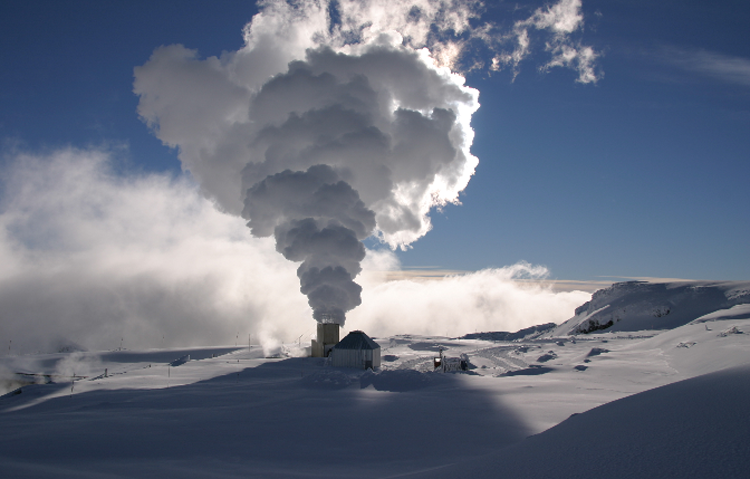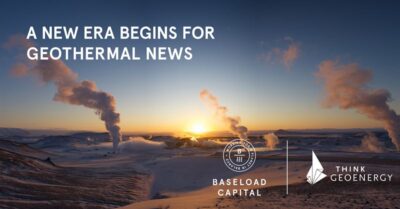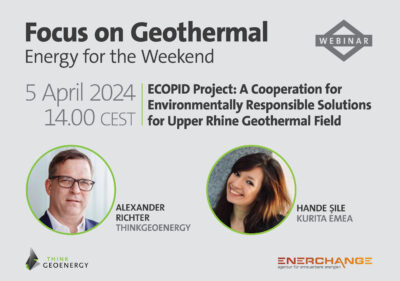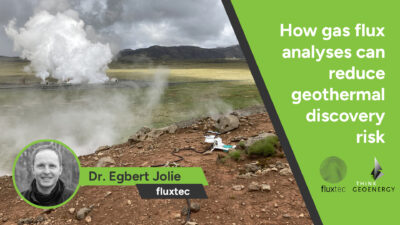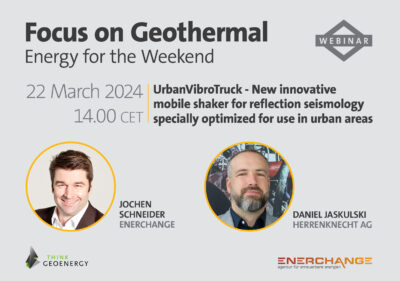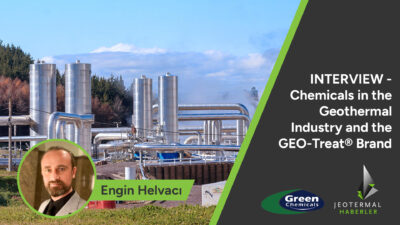Interview with CAF regarding geothermal development in Latin America
Our sister website Piensa En Geotermia has interviewed Mr. Garrón, senior specialist in Analysis and Development from CAF.
A few months ago we echoed that the Development Bank of Latin America, CAF, along with KfW and with the support of the European Commission, bade the design of a Geothermal Development Projects Fund in Latin America.
In order to learn more about the fund, Piensa en Geotermia has contacted Mauricio Garrón, senior energy specialist in charge of the strategy and Analysis Unit in the Vice presidency of Energy at CAF.
What is the Development Geothermal Projects Funds in Latin America and what is its goal?
The creation of this fund comes from the need to meet existing market failures in those countries where neither public nor private initiatives are responding to a need, so it is necessary to bring the international sector into play.
More than a fund, it could be defined as an initiative to boost geothermal energy in Latin America.
This initiative seeks to meet these market failures through three components: creating a risk mitigation fund, specific lines for geothermal financing and technical assistance.
To design the risk mitigation fund CAF, along with KfW, tendered a study in which the firm Rödl & Partner, was the winning bidder of the tender, which will study and propose the characteristics of this fund from which the following institutions: KfW, CAF, Central American Bank and IDB will jointly define its structure. It´s important to point out that there are other institutions like the World Bank and JICA, among others, which have shown interest in participating in this initiative.
What we want through including the element of technical assistance is to identify the needs of each market, which could be creating knowledge, studying the potential or lack of regulation, among others, -on this last point-, there are many countries which hardly have anyexclusive legislation for geothermal energy.
Finally and to close the circle, specific funding or “tailor made” lines for geothermal projects would be created.
The aim of this initiative is to help mitigate risks in the initial exploration phase, attracting interest from potential investors, supporting countries that barely have any legislation through technical assistance and finally giving the respective financial support.
We must take into account that Central and South America have different levels of development, and therefore their objectives are different. On one hand in Central America the objective is to drive current geothermal development, which is already advanced, and on the other hand, in South America the objective is to promote the development of projects to a commercial phase because today there is no working.
Which countries shall have access to the risk mitigation fund and which sectors will benefit?
The initial idea will cover Bolivia, Chile, Colombia, Ecuador and Peru, where it is estimated that potential and geothermal projects exist, but this is an initiative open to all countries which wish to participate and will depend on them to offer technical cooperation, financing, etc.
For our part we are working on a study which will help us to identify the status of geothermal energy in each country, project status, barriers in each market, etc., and from here on our intention is to propose a strategy in both the public and private sectors, in order that each actor can benefit in terms of its needs.
The credit lines will be available for both public and private sectors but what the existing scheme in each country gives will affect how much support is given to the public and private sectors.
One aspect that I would like to emphasize is that it is quite important to work on the establishment of a clear regulatory framework which allows the development and advancement of geothermal energy because even with funding, if we do not have clarity on regulation, we won’t make progress together.
What steps will be needed to access to the fund, when will it be available and what is the amount?
The type of fund design remains to be defined and we do not know if it will be made ??through guarantees, grants, etc., but independently of the execution mechanism, the idea is that if the drilling of the first well is successful, for example, the developer would undertake to develop the field through the funding line that I mentioned, but as I pointed out the mechanisms may vary, this is just an example.
The idea is that Rödl & Partner will finally set the fund for August of this year and at the same time we are applying for the necessary resources which will make up the total amount of the fund. It will probably be available early next year.
Regarding the amount, the fund is made ??up of several institutions but many of the resources come from the German government and the European Union which can reach up to USD 30 million. It is also expected to initially include approximately 3 to 5 million USD for technical cooperation and USD 200 million in credit lines dedicated to geothermal.
We would like to thank to Mauricio Garrón for his cooperation on the conduction of this interview.
CAF is a development bank created in 1970, made up by 18 countries of Latin America, The Caribbean, and Europe, as well as 14 private banks in the region.
It promotes a sustainable development model through credit operations, non-reimbursable resources, and support in the technical and financial structuring of projects in the public and private sectors of Latin America. More info at www.caf.com.
All these issues and many more will be discussed at the GEOLAC 2014 event which will be held in Costa Rica between 16 and 17 July. Click on the banner for further details and insert the code TGEGEOLAC14 on your application form to get a 10% discount
